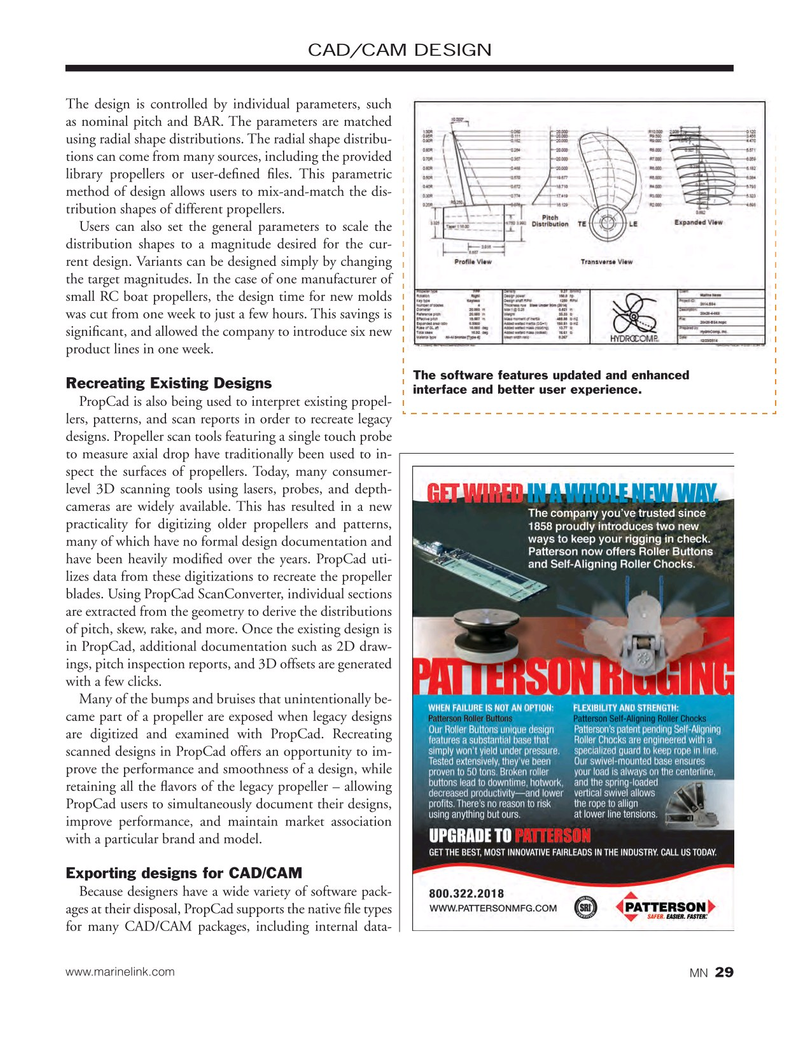
Page 29: of Marine News Magazine (February 2015)
Dredging & Marine Construction
Read this page in Pdf, Flash or Html5 edition of February 2015 Marine News Magazine
CAD/CAM DESIGN
The design is controlled by individual parameters, such as nominal pitch and BAR. The parameters are matched using radial shape distributions. The radial shape distribu- tions can come from many sources, including the provided library propellers or user-de? ned ? les. This parametric method of design allows users to mix-and-match the dis- tribution shapes of different propellers.
Users can also set the general parameters to scale the distribution shapes to a magnitude desired for the cur- rent design. Variants can be designed simply by changing the target magnitudes. In the case of one manufacturer of small RC boat propellers, the design time for new molds was cut from one week to just a few hours. This savings is signi? cant, and allowed the company to introduce six new product lines in one week.
The software features updated and enhanced
Recreating Existing Designs interface and better user experience.
PropCad is also being used to interpret existing propel- lers, patterns, and scan reports in order to recreate legacy designs. Propeller scan tools featuring a single touch probe to measure axial drop have traditionally been used to in- spect the surfaces of propellers. Today, many consumer- level 3D scanning tools using lasers, probes, and depth- cameras are widely available. This has resulted in a new practicality for digitizing older propellers and patterns, many of which have no formal design documentation and have been heavily modi? ed over the years. PropCad uti- lizes data from these digitizations to recreate the propeller blades. Using PropCad ScanConverter, individual sections are extracted from the geometry to derive the distributions of pitch, skew, rake, and more. Once the existing design is in PropCad, additional documentation such as 2D draw- ings, pitch inspection reports, and 3D offsets are generated with a few clicks.
Many of the bumps and bruises that unintentionally be- came part of a propeller are exposed when legacy designs are digitized and examined with PropCad. Recreating scanned designs in PropCad offers an opportunity to im- prove the performance and smoothness of a design, while retaining all the ? avors of the legacy propeller – allowing
PropCad users to simultaneously document their designs, improve performance, and maintain market association with a particular brand and model.
Exporting designs for CAD/CAM
Because designers have a wide variety of software pack- ages at their disposal, PropCad supports the native ? le types for many CAD/CAM packages, including internal data- www.marinelink.com
MN 29

 28
28

 30
30
